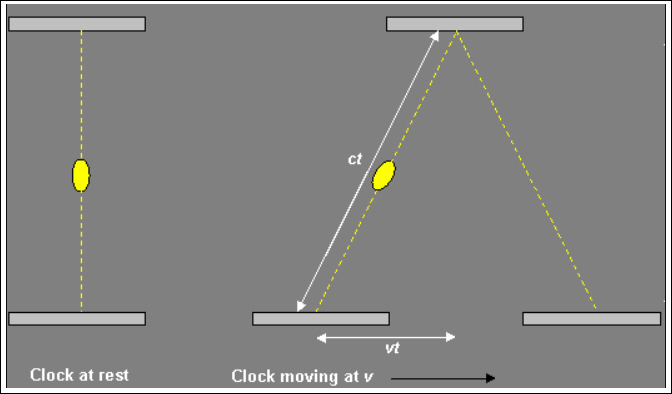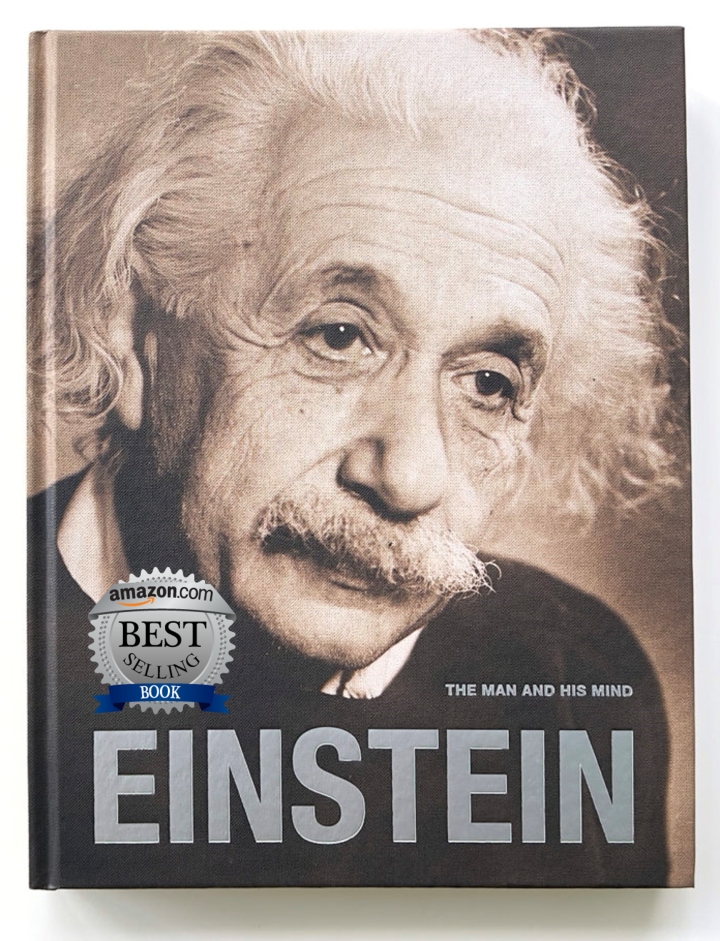
Light Clocks in Stationary and Moving Frames of Reference
Albert Einstein based his special theory of relativity on the concept that the speed of light is a universal constant. The invariance of light’s speed led him to conclude that time varies depending on one’s frame of reference.
Einstein introduced the special theory of relativity in 1905, which deals with the behavior of objects moving at constant linear velocities. It’s built upon two postulates: (1) the laws of physics are the same for all observers in uniform motion relative to one another (the relativity principle), and (2) the speed of light in a vacuum is constant.
This second postulate, constancy of the speed of light, is the cornerstone of special relativity. It means that no matter how fast or in what direction an observer moves, the speed of light remains the same. This contradicts our everyday experience, where velocities can be added to or subtracted from each other. For instance, if a train travels at 50 mph and a ball is thrown forward at 20 mph, a stationary observer outside the train will measure the ball’s velocity as 70 mph (the sum of the train’s and the ball’s velocities). But light doesn’t behave this way. If a flashlight is turned on inside the train pointing forward, both stationary and moving observers will measure the light’s velocity as the same. To explain this discrepancy, Einstein introduced the concept of the stretching of time, which he called time dilation.
Einstein’s thought experiment involving light clocks illustrates why the constancy of light’s speed implies variability of time. Imagine two mirrors facing each other with a light pulse bouncing between them. Each time the light hits a mirror, it reflects back to the other mirror, creating a tick-tock mechanism – in other words, a clock.
Consider this scenario for different frames of reference: stationary vs. moving at constant velocity. The reference frame with the stationary clock (illustrated on the left side of the diagram) shows the vertical path the light takes, bouncing back and forth between the mirrors. In the frame on the right, when the clock is moving, the light still travels vertically as it is reflected between the mirrors, but now it also has a horizontal component to its motion. Its path between the two mirrors is longer than in the stationary frame.
Since the distance light travels is greater in the moving frame than in the stationary frame, and the velocity of light is identical in both frames, the two clocks must be recording different times. The equation velocity = distance/time shows why this is so. For the velocity of light to remain constant when the distance it travels increases, time must decrease (i.e., clock slows down).
The following video shows the moving clock ticking slower than the stationary clock. This is not just an appearance. If the clocks reunite, they will show different times. The moving clock will have had fewer cycles between the mirrors (“ticks”) than the stationary clock. In other words, time has elapsed more slowly for the moving clock.
In 1915, Einstein published his general theory of relativity, which showed that a gravitational field bends and elongates the path of light, thereby resulting in time dilation.
General relativity considers spacetime to be a four-dimensional, flexible fabric consisting of the three spatial dimensions and the dimension of time. Objects of mass bend the fabric in a curvature, creating a “gravitational well.” The more massive the object, the greater the bending and gravitational effect. (A popular three-dimensional analogy is what happens when a bowling ball is placed on a trampoline, depressing the fabric. If a marble is then rolled onto the trampoline, the curvature of the fabric will make it circle inwards towards the bowling ball.)
Imagine two observers, one near and one far from a massive object like the Earth. Suppose the near observer sends a pulse of light to the far observer. In that case, the light will lose energy as it climbs out of the gravitational well, thereby stretching its wavelength length and lengthening the cycle period. The near observer will feel this gravitational effect more strongly than the far observer. Therefore, time passes more slowly for the near observer, i.e., clocks run more slowly in stronger gravitational fields than in weaker ones.
Time dilation has been experimentally confirmed many times over. The most direct experiments involve extremely precise clocks at different altitudes on Earth and clocks flown in airplanes, satellites, and spacecraft.
A practical application of our knowledge about time dilation is the Global Positioning System (GPS), which relies on a network of satellites equipped with atomic clocks. To ensure accurate positioning information, the clocks must remain synchronized with each other and clocks on the ground. This requires adjusting the clocks to account for time dilation due to their speed and altitude in the Earth’s gravitational field.
Summary
Einstein’s brilliant insight into the connection between light and time fundamentally changed our understanding of the physical world. He recognized that time is not an absolute entity ticking at the same rate everywhere. The speed of light remains constant throughout the universe, while time varies under different conditions of motion and gravitational fields.
Learn more about EINSTEIN: The Man And His Mind.
